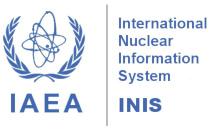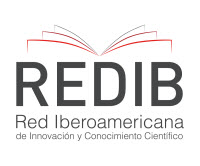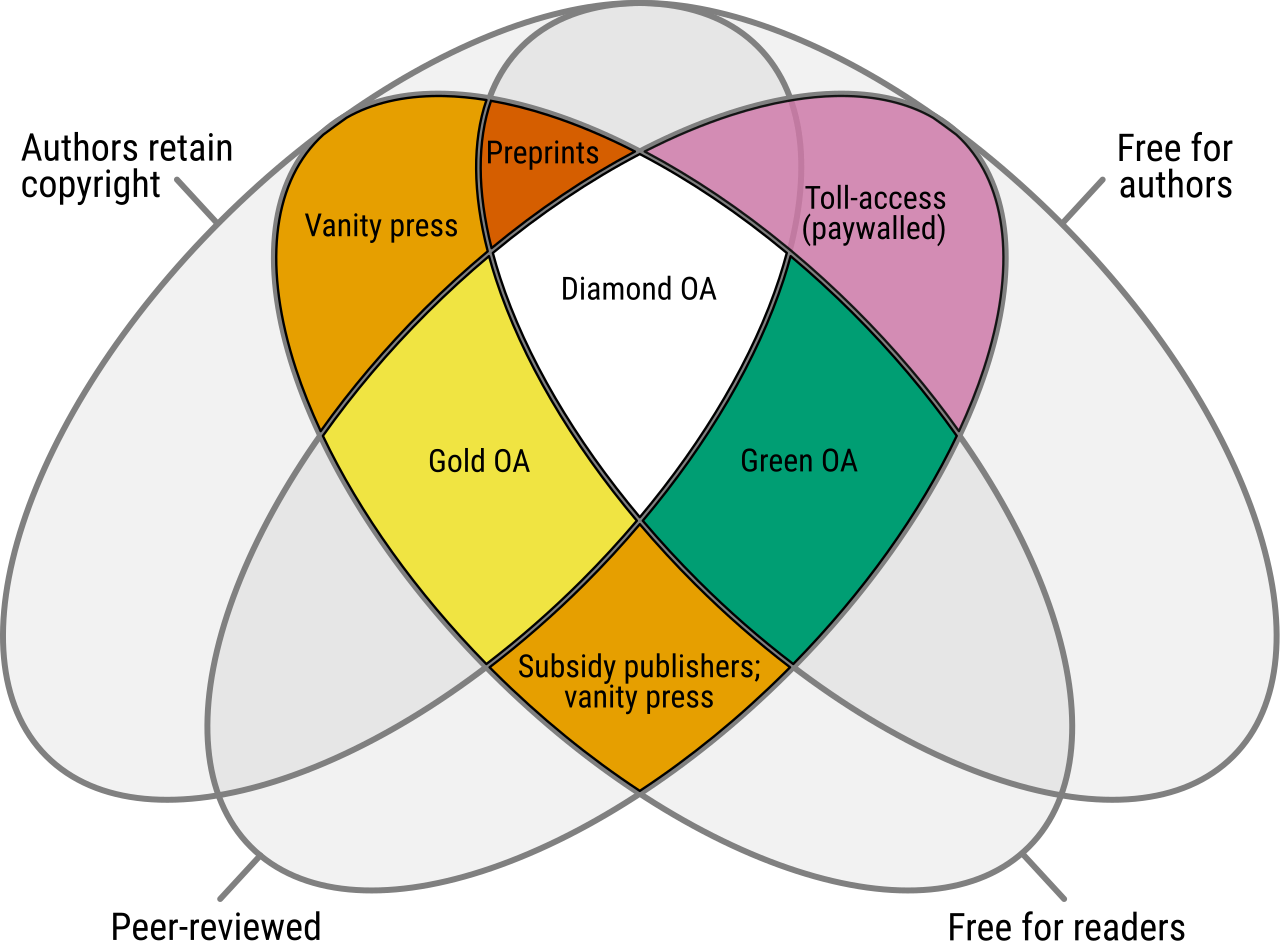A brief history of Accident Chernobyl: Simulation of the influence of Neutron Absorbing Poisons and temperature feedback effects by Point Kinetics Equations
DOI:
https://doi.org/10.15392/bjrs.v10i3.2082Palavras-chave:
Neutron Point Kinetics Equations, Temperature feedback, Absorbers poisons, Chernobyl accident simulation, Rosenbrock methodResumo
In this paper, the solution of the Neutron Point Kinetics model is presented, adding the effects of temperature and absorbers poisons within a historical and technical context to simulate the preliminary characteristics of the Chernobyl accident. The Point Kinetics model was able to extract physical information consistent with what was expected to predict the reactor situation until the accident. It was also possible to verify, given the results, that the Rosenbrock method was able to overcome the degree of stiffness of the ODE system, besides solving a non-linear problem. Thus, this study has contributed to highlighting the importance of temperature effects and especially absorbers poisons in the final power behavior, extremely relevant for decision making in the operation and safety of a nuclear power plant.
Downloads
Referências
CASTILHO, M. A.; SUGUIMOTO, D. Y. L. Chernobyl - A catástrofe. Rev. da UninCor, v. 12, p. 316-322, 2014. DOI: https://doi.org/10.5892/ruvrd.v12i2.1506
CHAN, P. S. W.; DASTUR, A. R.; GRANT, S. D.; HOPWOOD, J. M.; CHEXAL, B. Multidimensional Analysis of the Chernobyl accident. Atomic Energy of Canada Limited and Electric Power Research Institute AECL-9604. Canada, 1988.
PLOKHY, S. Chernobyl: History of a Tragedy. London: Penguin Press, 2018.
MEDVEDEV, G. The Truth about Chernobyl. New York: Tauris, 1991.
FLETCHER, C.D.; CHAMBERS, R.; BOLANDER, M. A.; DALLMAN, R. J. Simulation of the Chernobyl accident. Nucl. Eng. Des., v. 105, p. 157-172, 1988. DOI: https://doi.org/10.1016/0029-5493(88)90337-8
YOSHIDA, K.; TANABE, F.; HIRANO, M.; KOHSAKA A. Analyses of Power Excursion Event in Chernobyl Accident with RETRAN Code. Taylor & Francis. J. Nucl. Sci. Technol. v. 23, p. 1107-1109, 1986. DOI: https://doi.org/10.1080/18811248.1986.9735104
GEER, L.; PERSSON, C.; RODHE, H. A Nuclear Jet at Chernobyl Around 21:23:45 UTC on April 25, 1986. Nucl. Technol., v. 201, p. 11-22, 2017. DOI: https://doi.org/10.1080/00295450.2017.1384269
PARISI, C. Nuclear Safety of RBMK Reactors. Tese de doutorado em Engenharia Leonardo da Vinci, Universidade de Pisa, 2008.
NAHLA, A. A. An efficient technique for the point reactor kinetics equations with Newtonian temperature feedback effects. Ann. Nucl. Energy., v. 38, p. 2810-2817, 2011. DOI: https://doi.org/10.1016/j.anucene.2011.08.021
ABOANBER, A. E.; NAHLA, A. A.; AL-MALKI, F. A.. Stability of the analytical perturbation for nonlinear coupled kinetics equations. In: Intl. Conf. On Mathematics, Trends and Development ICMTD12, Egyptian Mathematical Society, Cairo, Egypt, 2012.
MOHIDEEN ABDUL RAZAK, M.; RATHINASAMY, N.. Haar wavelet for solving the inverse point kinetics equations and estimation of feedback reactivity coefficient under background noise. Nucl. Eng. Des., v. 335, p. 202-209, 2018. DOI: https://doi.org/10.1016/j.nucengdes.2018.04.022
ABOANBER, A.; HAMADA, D. Power series solution (PWS) of nuclear reactor dynamics with newtonian temperature feedback. Ann. Nucl. Energy., v. 30, p. 1111-1122, 2003. DOI: https://doi.org/10.1016/S0306-4549(03)00033-1
SATHIYASHEELA, T. Power series solution method for solving point kinetics equations with lumped model temperature and feedback. Ann. Nucl. Energy. v. 36, p. 246-250, 2009. DOI: https://doi.org/10.1016/j.anucene.2008.11.005
PAGANIN, T. M.; BODMANN, B. E. J.; VILHENA, M. T. On a point kinetic model for nuclear reactors considering the variation in fuel composition. J. Prog. Nucl. Energy., v. 118, p. 103-134, 2020. DOI: https://doi.org/10.1016/j.pnucene.2019.103134
YANG, X.; JEVREMOVIC, T. Revisiting the Rosenbrock numerical solutions of the reactor point kinetics equation with numerous examples. J. Nucl. Technol. Radiat. Prot., v. 24, p. 3-12, 2009. DOI: https://doi.org/10.2298/NTRP0901003Y
SCHAUN, N. B.; TUMELERO, F.; PETERSEN, C. Z. Solution of the Neutron Point Kinetics equations by applying the Rosenbrock method. In: 18th Brazilian Congress of Thermal Sciences and Engineering, Online, 2020. DOI: https://doi.org/10.26678/ABCM.ENCIT2020.CIT20-0765
SCHAUN, N. B.; TUMELERO, F.; PETERSEN, C. Z. Solução das equações da cinética pontual de nêutrons com feedback de temperatura via método de Rosenbrock. In: XXIII Encontro Nacional de Modelagem Computacional, Palmas, TO, 2020.
SCHAUN, N. B.; TUMELERO, F.; PETERSEN, C. Z. Influence of the main neutron absorbers poisons coupled to the Point Kinetics model by the Rosenbrock’s method. BRAZILIAN JOURNAL OF RADIATION SCIENCES, v. 10, p. 1-20, 2022. DOI: https://doi.org/10.15392/bjrs.v10i1.1705
DUDERSTADT, J., HAMILTON, L. Nuclear Reactor Analysis. New York: John Wiley & Sons, 1976.
CURTISS, C.; HIRSCHFELDER, J. Integration of Stiff Equations. Proceedings of the National Academy of Sciences of the United States of America, v. 38, p. 235-243, 1952. DOI: https://doi.org/10.1073/pnas.38.3.235
VOSS, D. A. Fourth-order parallel Rosenbrock formulae for stiff systems. J. Math. Comput. Model. Dyn. Syst., v. 40, p. 1193-1198, 2004. DOI: https://doi.org/10.1016/j.mcm.2005.01.013
ABOANBER, A. E; HAMADA, Y. Generalized Runge–Kutta method for two and three-dimensional space–time diffusion equations with a variable time step. Ann. Nucl. Energy., v. 35, p. 1024-1040, 2008. DOI: https://doi.org/10.1016/j.anucene.2007.10.008
KAPS, P.; RENTROP, P. Generalized Runge-Kutta methods of order four with step size control for stiff ordinary differential equations. Numer Math., v. 33, p. 55-68, 1979. DOI: https://doi.org/10.1007/BF01396495
ABOANBER, A. E. Stability of generalized Runge–Kutta methods for stiff kinetics coupled differential equations. J. Phys. A Math. Theor., v. 39, p. 1859-1876, 2006. DOI: https://doi.org/10.1088/0305-4470/39/8/006
SILVA, D. E. Acidente de Chernobyl (causas e consequências). Rio de Janeiro: Comissão Nacional de Energia Nuclear (CNEN), 1986.
Downloads
Publicado
Edição
Seção
Licença
Direitos autorais (c) 2022 Brazilian Journal of Radiation Sciences

Este trabalho está licenciado sob uma licença Creative Commons Attribution 4.0 International License.
Declaro que o presente artigo é original, não tendo sido submetido à publicação em qualquer outro periódico nacional ou internacional, quer seja em parte ou em sua totalidade. Declaro, ainda, que uma vez publicado na revista Brazilian Journal of Radiation Sciences, editada pela Sociedade Brasileira de Proteção Radiológica, o mesmo jamais será submetido por mim ou por qualquer um dos demais co-autores a qualquer outro periódico. Através deste instrumento, em meu nome e em nome dos demais co-autores, porventura existentes, cedo os direitos autorais do referido artigo à Sociedade Brasileira de Proteção Radiológica, que está autorizada a publicá-lo em meio impresso, digital, ou outro existente, sem retribuição financeira para os autores.
Licença
Os artigos do BJRS são licenciados sob uma Creative Commons Atribuição 4.0 Licença Internacional, que permite o uso, compartilhamento, adaptação, distribuição e reprodução em qualquer meio ou formato, desde que você dê o devido crédito ao (s) autor (es) original (is) e à fonte, forneça um link para a licença Creative Commons, e indique se mudanças foram feitas. As imagens ou outro material de terceiros neste artigo estão incluídos na licença Creative Commons do artigo, a menos que indicado de outra forma em uma linha de crédito para o material. Se o material não estiver incluído no licença Creative Commons do artigo e seu uso pretendido não é permitido por regulamentação legal ou excede o uso permitido, você precisará obter permissão diretamente do detentor dos direitos autorais. Para visualizar uma cópia desta licença, visite http://creativecommons.org/licenses/by/4.0/






















